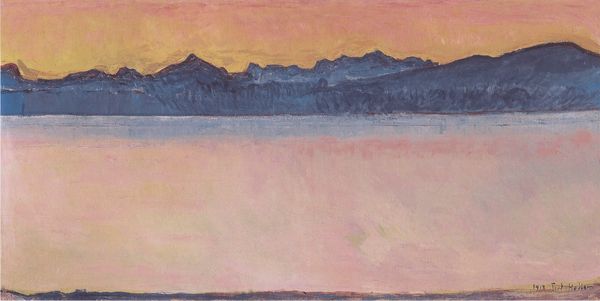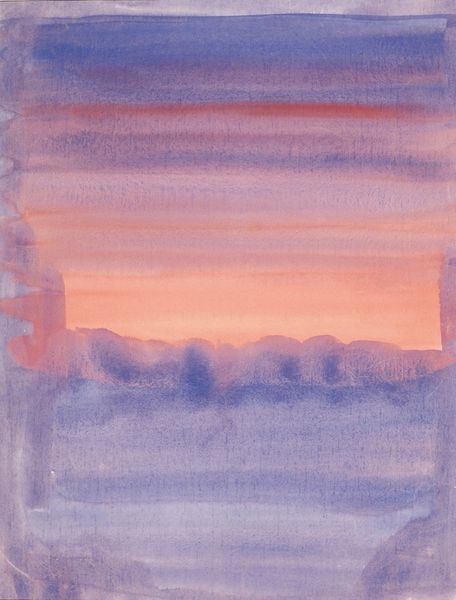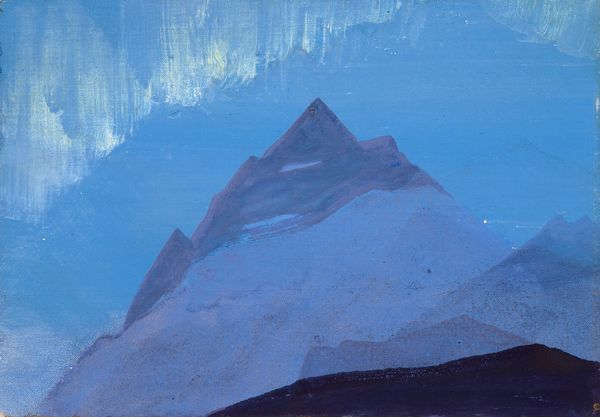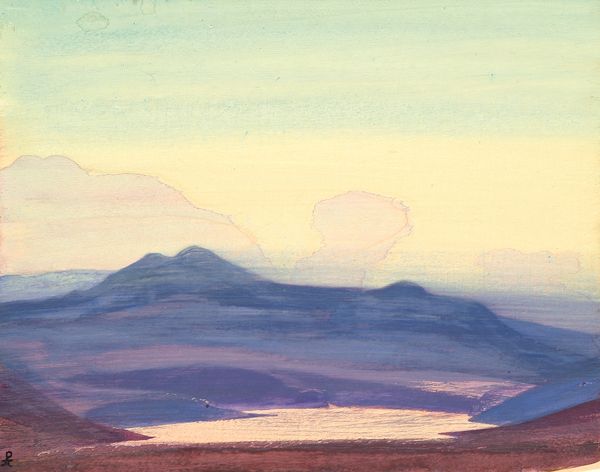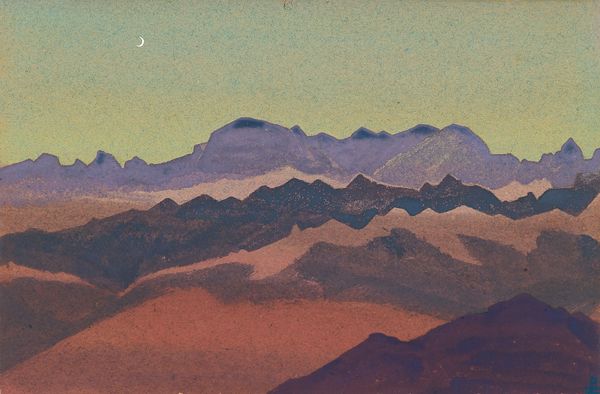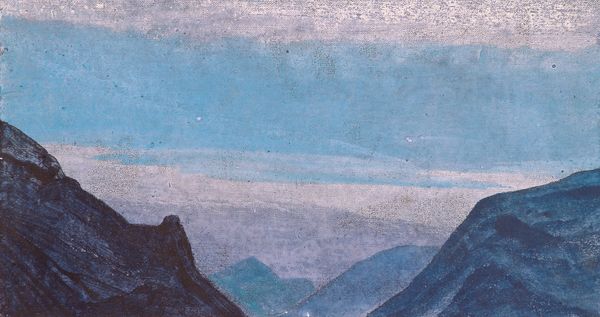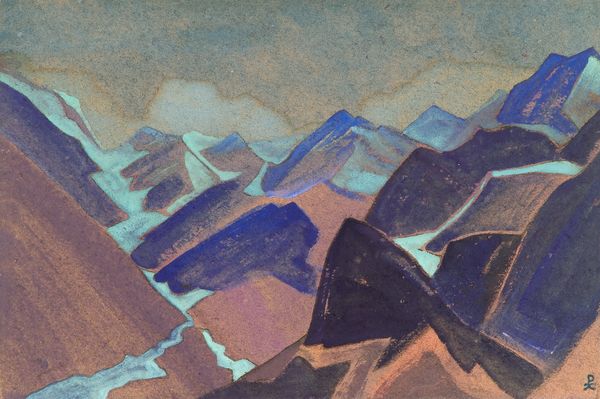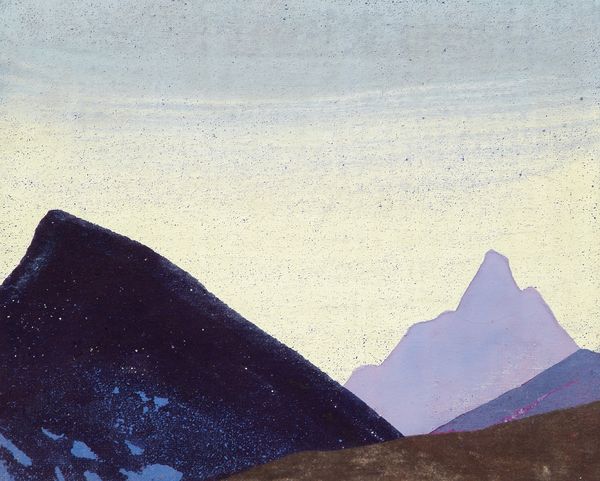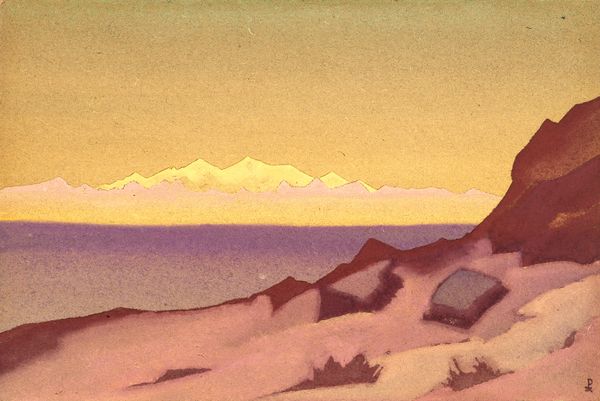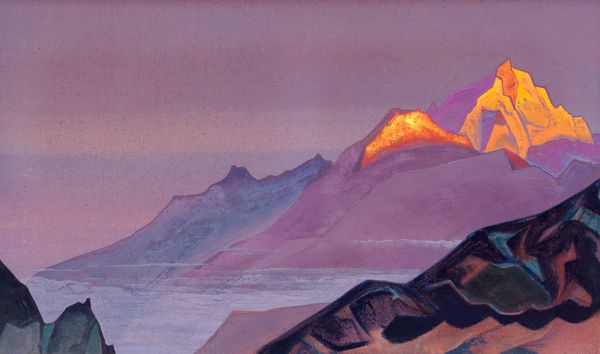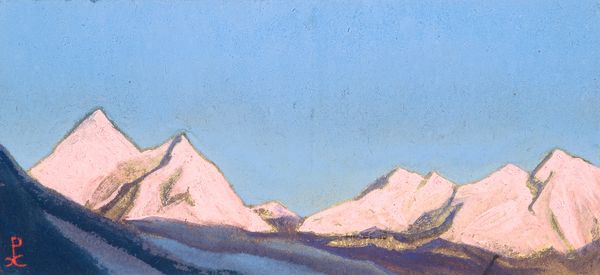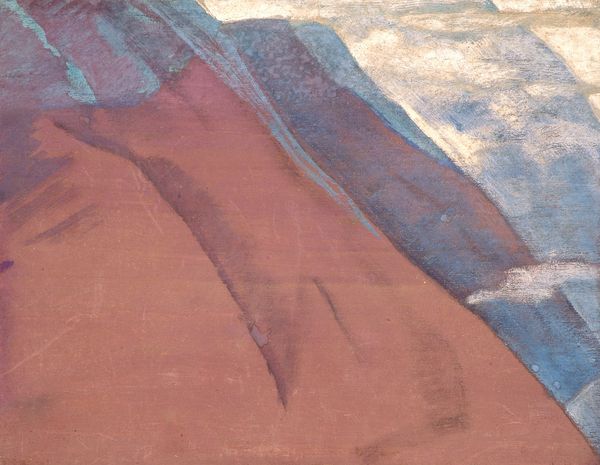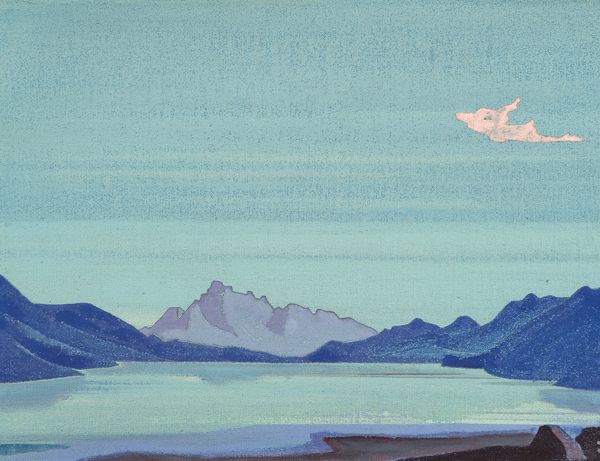
Copyright: Public domain
Curator: Here we have "Himalayas (study)," created in 1930 by Nicholas Roerich. I find its coloration quite intriguing, a definite departure from what I expect when considering landscape painting, but what do you think when you first observe it? Editor: An airy pastel dreamscape. It’s calming, almost ethereally so. The colors are so muted; it feels less like a depiction of solid rock and more like an atmosphere of longing and gentle reverie. Curator: That feeling really resonates. Roerich, with his profound interest in Theosophy and Eastern spiritualism, often aimed to capture the unseen, to evoke a sense of the mystical that underlies the visible world. Editor: Precisely! It’s as though he is less concerned with geographic accuracy and more driven by communicating a symbolic idea, with the mountain ranges existing as thresholds to different mental states, liminal realms. How interesting given Roerich's fascination with the symbolic and political meanings behind the artistic interpretation of cultural landmarks. Curator: Exactly. And Roerich spent much of his life traveling through Central Asia. What I find so striking is that this particular work acts as a study, but I struggle to define whether his goal was more representative or more of an aesthetic statement. In truth, it embodies aspects of both approaches. Editor: The application of color suggests an emphasis on affect and effect rather than direct replication. It beckons introspection and reverie. I think he saw the Himalayas not just as physical mountains, but as something deeply integrated with both the Earth and our spirituality. It has the power to touch something primal. The high altitude might explain its association to states of enlightenment. Curator: Roerich really understood the cultural impact of art and was heavily influenced by his upbringing within Russia’s intellectual circles. Considering it was crafted in 1930, at a very tense turning point in world history, it stands apart, distinct from the general output of the time. Editor: Indeed. To dwell upon such expansive quietude—rather than, say, social commentary—seems quietly revolutionary. I am reminded how crucial art remains to be considered for cultural value outside art’s aesthetic merits alone. It’s a moment of stillness amid gathering storms. Curator: I agree wholeheartedly; his works reflect and affect humanity as a cultural reflection. Editor: This study leaves us to wonder just how many states Roerich could access when looking at mountains—not only outside himself, but also the symbolic power those spaces can generate internally. It becomes another experience altogether.
Comments
No comments
Be the first to comment and join the conversation on the ultimate creative platform.
